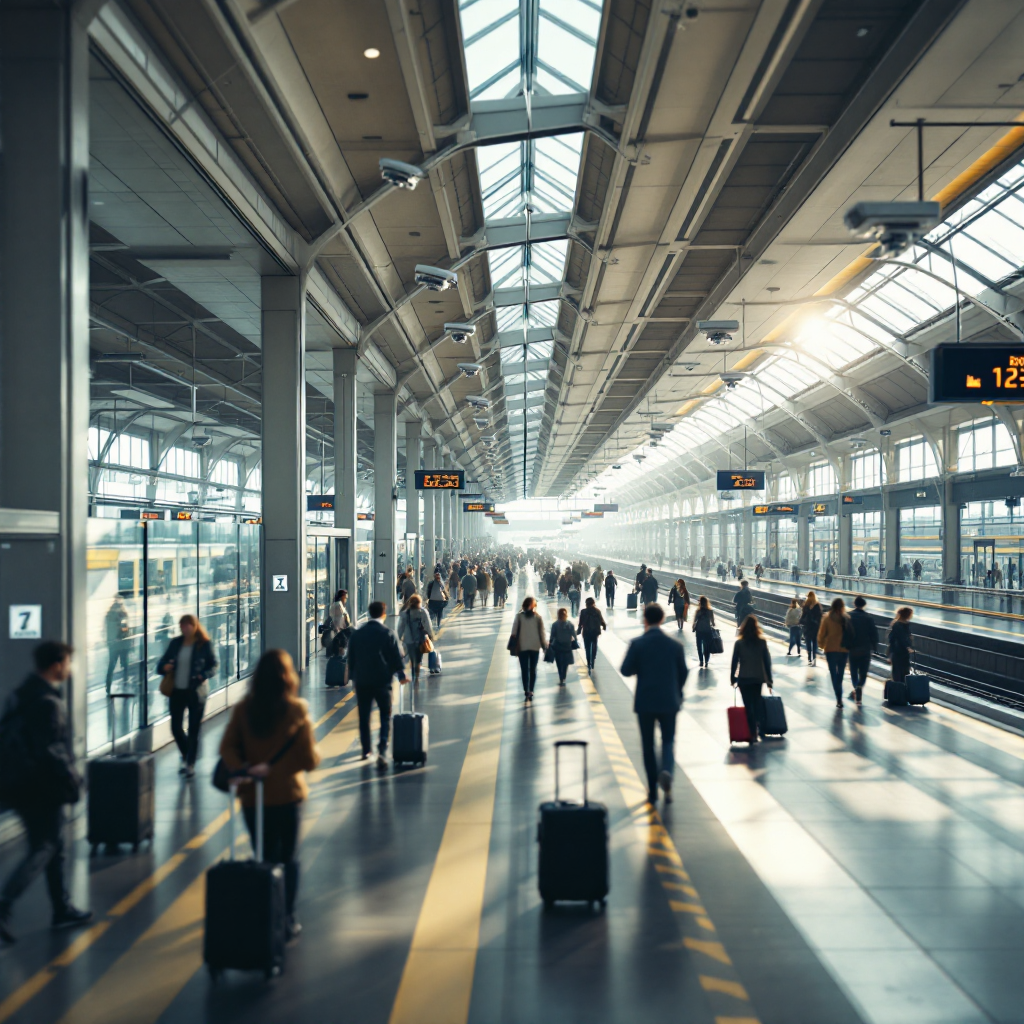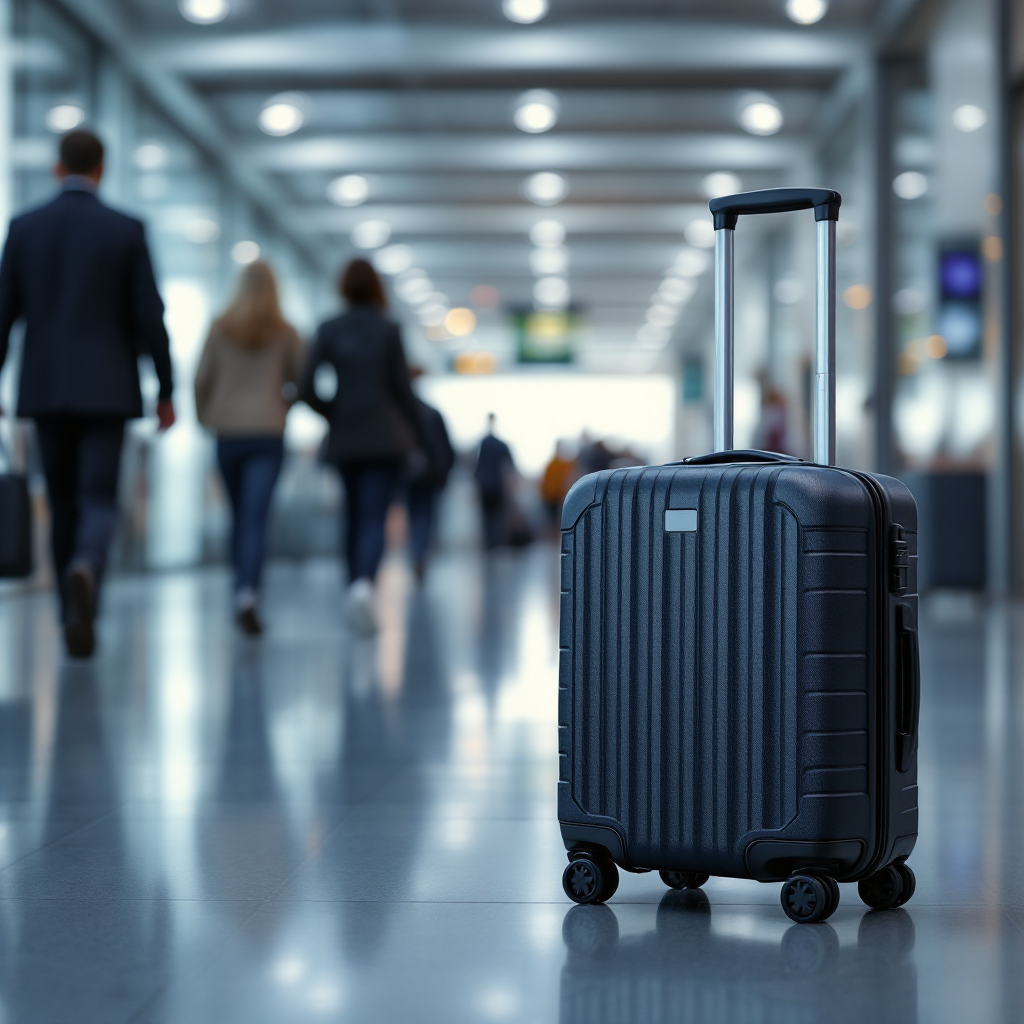detection system and computer vision: camera-based object detection
First, stations rely on camera networks to form a practical detection system that watches platforms and concourses. Stations like train stations use many camera angles, and feeds run continuously. In practice, a surveillance camera can turn a passive CCTV feed into actionable events, and this transforms how teams respond. Modern computer vision models run on these feeds to identify people, baggage, and movement. For example, our platform ingests streams and applies models on-prem, so operators keep control and comply with local rules. In addition, CCTV systems integrated with VMS make it easier to scale from a single camera to a site-wide surveillance system.
AI-driven computer vision does the heavy lifting. Models perform classification and tracking on each video stream, and they mark a foreground object when it differs from background motion. Then, object detection algorithms label items as bag, suitcase, or backpack. This step matters because accurate labeling improves owner association later. A robust detection system will also output structured events for operations. Visionplatform.ai supports that approach by streaming MQTT events to dashboards, and by keeping models local for GDPR and EU AI Act readiness.
Also, high-resolution camera feeds increase the chance of correct identification of a luggage item. Higher pixel counts help differentiate small cues such as handles, tags, or straps. Research shows that crowded public space scenarios are challenging because people move constantly and objects overlap, yet quality video aids the system’s ability to detect abandoned luggage and to reduce false alarms “Abandoned luggage represents a potential threat to public safety”. Therefore, careful camera placement and lens selection matter. Finally, for more on station-specific analytics, see our guide to AI video analytics for train stations AI video analytics for train stations.
real-time luggage detection and abandoned luggage detection at busy stations
Real-time response is essential in busy places. Systems must flag concerns and send alerts within seconds. Recent work reports a mean average precision exceeding 88% for live systems, which shows the feasibility of real-time implementations in active environments mean average precision (mAP) > 88%. In addition, small-object models such as YOLOv11-s report high precision for small targets and suit crowded contexts where small cues matter: precision for small objects can reach about 85.8% YOLOv11-s 85.8% precision. First, the model processes frames quickly. Next, the pipeline applies non-max suppression and temporal smoothing to avoid flurries of alerts.
To keep speed while preserving accuracy, teams combine lightweight models at the edge with heavier verification steps in a central node. The edge filters obvious non-events. Then, a central server applies more compute for ambiguous frames. This staged approach supports real-time detection of abandoned alerts and helps maintain detection accuracy without overloading hardware. Also, techniques such as frame skipping, region-of-interest prioritization, and adaptive frame rate reduce load. The results show high performance and a low rate of false alarms when proper thresholds are set. For example, precision for medium-sized objects in such systems has been reported above 96% in live tests precision > 96%. Finally, to learn how station analytics extend to terminals, see our left-behind object work for terminals left-behind object detection in terminals.

AI vision within minutes?
With our no-code platform you can just focus on your data, we’ll do the rest
suspicious items and abandoned objects in public places: identifying potential threat
Security teams define abandoned objects as items left without a responsible person nearby. In practice, that means an item is stationary while expected owners move away. Identifying abandoned objects has security implications because unattended bags can represent a potential threat, and quick action reduces risk. As a review explains, “Identifying objects as luggage, identifying the owners of such objects, and identifying whether owners have left luggage behind are the three main problems requiring solution” localized detection study. Therefore, the detection process must link bags to people reliably.
Case studies show how alerts evolve. First, a bag is flagged by object detection algorithms. Then, object tracking assigns a persistent ID. Next, the system attempts to associate movement of nearby people with the bag. If no association forms within a configured dwell time, the bag becomes an abandoned luggage item. Operators then decide on the risk level. Systems often combine visual cues with contextual rules. For instance, a bag near train boarding areas may trigger a higher-risk assessment.
Risk assessment protocols vary. Many sites use graded responses: verify visually, make an audio announcement, isolate the area, and call security if needed. Visual verification is supported by automation, and cognitive research shows that automation aids speed under time pressure visual search behavior study. Also, a clear audit trail helps post-event review. For context on how unattended items matter across transport hubs, note that TSA reported high-value left items over a decade, underscoring scale and cost for operators TSA left items data.
people and luggage proximity: detect owner and reduce false alarms
First, pairing people and luggage reduces false positives. A common model uses concentric zones. The 2 m ring marks attended items. The 3 m ring flags items as potentially unattended. Research uses these yellow and red rings to define status and to limit nuisance alerts in crowded flows spatial ring model. This method helps when many people and luggage move through the same area.
Algorithms track people and luggage, then infer ownership. Object tracking assigns persistent IDs. Then, association logic links a person ID and a luggage ID based on proximity, motion correlation, and time spent near the item. If the owner walks away, the system can detect abandoned luggage in video and escalate. Detecting people and luggage together significantly contributes to lowering false alarms while keeping early detection we need.
Also, camera placement supports robust tracking. Overhead views reduce occlusions. Side views add detail for ownership cues. Combining multiple camera perspectives improves luggage ownership inference and helps when a foreground object overlaps a human. Our platform processes multiple streams and re-associates IDs across cameras, so people and luggage captured on one camera can be linked to the same objects elsewhere. For practical guidance on crowd flow and zone occupancy, see our platform crowd management resource platform crowd management with cameras. This approach balances sensitivity and specificity and reduces false alarms for busy operations.
AI vision within minutes?
With our no-code platform you can just focus on your data, we’ll do the rest
abandoned object detection in a detection system: spatial analysis and precision
Combining object detection with zone-based spatial analysis gives strong performance for abandoned object detection. First, object detection models mark potential luggage. Then, spatial rules mark status by proximity to people and by time thresholds. The system measures luggage dwell time and then flags unusual remains. In testing, medium-sized items yield excellent performance in object detection, with precision figures above 96% in some live setups precision > 96% for medium objects. This result confirms that combining solid models with spatial logic improves detection performance.
Challenges persist. Overlapping objects, dynamic lighting, and crowds complicate workflows. When a foreground object overlaps a person, models can misclassify. Also, shadows and reflections can create false detections. To cope, systems use temporal filters and multi-frame consensus. Additionally, detector confidence and track continuity guide alert thresholds. Object detection model choice also matters; modern versions significantly improve object detection accuracy and help in demanding surveillance contexts. For instance, versions significantly improve object detection when trained on site-specific footage, and this strategy can significantly improve object detection accuracy in demanding surveillance.
Furthermore, practical deployments benefit from human oversight. A human reviewer can check ambiguous alarms fast. This hybrid setup reduces false positives and increases trust. Our platform streams structured events and supports quick video retrieval, so verification is fast. For visual examples of left-behind objects and how we handle them in terminals, explore our baggage hall and terminal analytics pages baggage hall analytics and left-behind object detection in terminals.

effective abandoned luggage detection and abandoned luggage systems: deployment and future directions
Deploying an abandoned luggage detection system at scale requires infrastructure and policy. Start with camera inventory and network capacity. Then, choose where edge compute will run. For EU compliance, many clients prefer on-prem or edge processing so models and data remain local. Visionplatform.ai supports on-prem deployment and works with common VMS platforms, enabling integration without cloud reliance. This design supports GDPR and EU AI Act needs and keeps ownership of models and training data local.
Next, choose your detection method and calibrate dwell times. Short dwell times increase sensitivity, while longer windows reduce nuisance alerts. The algorithm for detecting abandoned luggage should reflect local risk tolerance and passenger flows. Also, build a clear escalation path for suspicious items. Automatic detection of abandoned luggage is useful, but human-in-the-loop verification remains important for final decisions. Training staff to interpret alerts improves response speed and reduces unnecessary interventions.
Future research trends include multimodal verification, additional sensor fusion, and adaptive models that learn site patterns. Object detection algorithms can be retrained on local classes to detect specific types and to reduce false alarms. Early detection and rapid verification together improve operational outcomes and reduce delays. For airport and rail contexts, integrated solutions with baggage detection, vehicle detection, and crowd analytics deliver stronger situational awareness across airports and train stations. Finally, effective abandoned luggage detection depends on solid infrastructure, clear rules, and regular tuning. For more on Milestone integration and how to operationalize camera events, see our Milestone XProtect integration for airport CCTV Milestone integration.
FAQ
How does a detection system decide when luggage is unattended?
Systems use spatial and temporal rules to decide when an item is unattended. They typically track proximity to the nearest people, then apply a dwell time threshold before flagging an event.
What role do cameras play in luggage detection?
Cameras supply the video stream that models analyze for object detection and object tracking. High-resolution cameras often improve accuracy in differentiating luggage types and small details.
Can these systems work in busy train stations?
Yes. Real-time systems tuned for crowd patterns can detect abandoned luggage in busy stations. They rely on fast models, multi-camera tracking, and calibrated thresholds to reduce false alarms.
How accurate are current object detection models for luggage?
Modern models report high precision, often above 85% for small objects and above 96% for medium objects in live tests. Performance improves further when models are trained on local data.
What happens after a suspicious item is flagged?
Alerts usually go to security staff for visual verification. Protocols can include announcements, area isolation, and escalation to specialist teams if needed.
Do these systems keep video off the cloud for compliance?
They can. On-prem and edge deployments let operators keep models and data local for GDPR and EU AI Act compliance. Visionplatform.ai supports on-prem processing and private model training.
How do systems link a luggage item to its owner?
Object tracking assigns IDs to both people and luggage. Association logic then correlates movement and proximity to infer ownership. If a person moves away, the system can flag the item as abandoned.
Can alerts be tuned to reduce false alarms?
Yes. Operators can adjust dwell time, confidence thresholds, and zone rules. Human-in-the-loop verification also dramatically reduces nuisance alerts.
Are there ways to improve detection in poor lighting?
Yes. Use cameras with better low-light performance, add multi-camera coverage, and apply temporal smoothing in software. Retraining models on local footage under similar lighting helps too.
Where can I learn more about deploying these systems in transport hubs?
See detailed resources on airport and terminal analytics, baggage hall flow, and train station analytics available on our site. For station-specific guides, review our pages on baggage hall analytics and train station AI video analytics.

